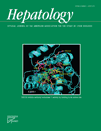Antituberculosis therapy drug-induced liver injury and acute liver failure†
Potential conflict of interest: Nothing to report.
We read with great interest the study by Kumar et al.,1 who reported antituberculosis therapy (ATT) as the only cause of drug-induced acute liver failure (ALF) in northern India, in contrast to antimicrobials, anticonvulsants, and paracetamol in the West2-6 and in southern India.7
Our experience with drug-induced liver injury (DILI), including injury due to ATT, from 1997 to 2008 at the Department of Gastroenterology of St. John's Medical College Hospital (Bangalore, India) offers something in support of their findings and something at odds.7 Table 1 outlines the clinical and biochemical characteristics of all patients with DILI due to ATT. Kumar et al.1 found a mortality rate of 67% among 70 patients (mean age = 32 years) with ATT-caused ALF; most (63%) were treated empirically for tuberculosis. In support of their findings, we observed that our patients were young (mean age = 40 years) and that the mortality rate was 67% among 49 patients with ALF due to ATT and 42% among patients who were inappropriately treated for tuberculosis. Our model, using a combination of the bilirubin level [odds ratio (OR) = 1.17, confidence interval (CI) = 1.06-1.35], prothrombin time (OR = 1.13, CI = 1.06-1.24), and creatinine level (OR = 9.77, CI = 2.58-57.63), yielded a concordance of 97% for mortality.
| Variable | Survivors (n = 142) | Nonsurvivors (n = 39) | OR (95% CI)* | P Value* | Concordance (%) |
|---|---|---|---|---|---|
| Age (years) | 42.9 | 40.2 | 1.00 (0.96-1.01) | 0.351 | 52 |
| Male | 101 (55.8%) | 80 (44.2%) | 0.79 (0.38-1.62) | 0.522 | 53 |
| Jaundice | 96 (67.6%) | 39 (100%) | 37.0 (9.2-658.5) | <0.001 | 70 |
| Skin rashes | 15 (10.6%) | 09 (23.7%) | 2.6 (1.0-6.5) | 0.05 | 56 |
| Encephalopathy | 16 (11.3%) | 33 (84.6%) | 43.3 (16.7-130.2) | <0.001 | 87 |
| Ascites | 25 (17.7%) | 25 (64.1%) | 8.3 (3.8-18.6) | <0.001 | 73 |
| Treatment duration (months) | 1.8 | 2.2 | 1.0 (0.99-1.0) | 0.34 | 60 |
| Total proteins (g/dL) | 6.3 | 5.6 | 0.6 (0.4-0.8) | 0.003 | 66 |
| Albumin (g/dL) | 3.0 | 2.4 | 0.3 (0.2-0.5) | <0.001 | 70 |
| Total bilirubin (mg/dL) | 6.5 | 20.4 | 1.2 (1.1-1.3) | <0.001 | 88 |
| Direct bilirubin (mg/dL) | 4.4 | 11.2 | 1.2 (1.1-1.3) | <0.001 | 88 |
| AST (u/L) | 381.4 | 733.2 | 1.00 (1.00-1.00)† | 0.006 | 63 |
| ALT (u/L) | 340.1 | 590.7 | 1.00 (1.00-1.0)† | 0.062 | 53 |
| ALP (u/L) | 227 | 331 | 1.00 (1.00-1.00)† | 0.03 | 69 |
| PT (seconds) | 23.9 | 60.2 | 1.09 (1.06-1.13) | <0.001 | 90 |
| INR | 1.7 | 5.0 | 2.7 (1.9-4.1) | <0.001 | 90 |
| Serum creatinine (mg/dL) | 0.9 | 1.9 | 5.7 (2.1-27.2) | <0.001 | 74 |
| WBC (μL) | 9784 | 13907 | 1.00 (1.00-1.00)‡ | 0.002 | 64 |
| Eosinophils (%) | 2.3 | 1.1 | 0.8 (0.6-1.00) | 0.05 | 62 |
| Platelets (105/μL) | 2.2 | 2.0 | 0.8 (0.6-1.2) | 0.39 | 64 |
| MELD | 15.1 | 36.8 | 1.3 (1.2-1.9) | <0.001 | 97 |
- Data are presented as means or n (%).
- Abbreviations: ALP, alkaline phosphatase; ALT, alanine aminotransferase; AST, aspartate aminotransferase; INR, international normalized ratio; MELD, Model for End-Stage Liver Disease; PT, prothrombin time; WBC, white blood count.
- * From a univariate logistic regression model predicting death (yes versus no).
- † OR for a 100-U increase.
- ‡ OR for a 1000-U increase.
We were intrigued to find ATT as the sole cause of drug-induced ALF in their series over 22 years. In our series, ATT was a contributing factor in 58% of all cases of DILI (n = 313) and in 76.6% of patients with drug-induced ALF. Others who presented with ALF included users of phenytoin (n = 5), dapsone (n = 3), paracetamol (n = 1), complementary medicine (n = 1), amoxicillin-clavulanate (n = 1), hormones (n = 1), atorvastatin (n = 1), and chemotherapeutics (n = 2). How can the differences be explained? Were patients with only select types of ALF admitted while others sought admission elsewhere? Moreover, is it possible to determine the proportion of patients with ALF among all ATT-caused DILI patients because such patients are reported by the institute?8 Despite the increasing prevalence of tuberculosis and acquired immune deficiency syndrome in the last decade, we were surprised to read about the decreasing incidence of ALF due to ATT and the absence of human immunodeficiency virus infection; this is contrary to our experience.
In summary, ATT-induced ALF is a major cause of drug-induced ALF in India, but it is not the only cause; phenytoin, dapsone, and others also contribute. Inappropriate medications contribute to a large number of ATT-caused cases of DILI and ALF, which are potentially preventable. A high Model for End-Stage Liver Disease score or a combination of the bilirubin level, prothrombin time, and creatinine level is associated with mortality, and patients may be selected for early referral for transplantation.
References
Harshad Devarbhavi M.D., D.M.* , Ross Dierkhising M.S. §, Walter K. Kremers Ph.D.§ §, * Department of Gastroenterology, St. John's Medical College Hospital, Bangalore, India, William J. Von Liebig Transplant Center, Division of Gastroenterology, Department of Internal Medicine, § Department of Health Sciences Research, Mayo Clinic and Mayo Clinic College of Medicine, Rochester, MN.




